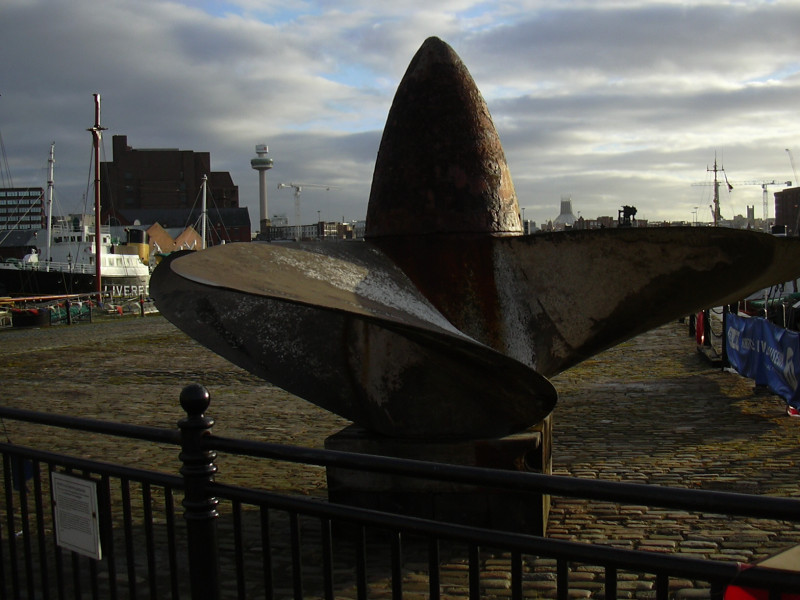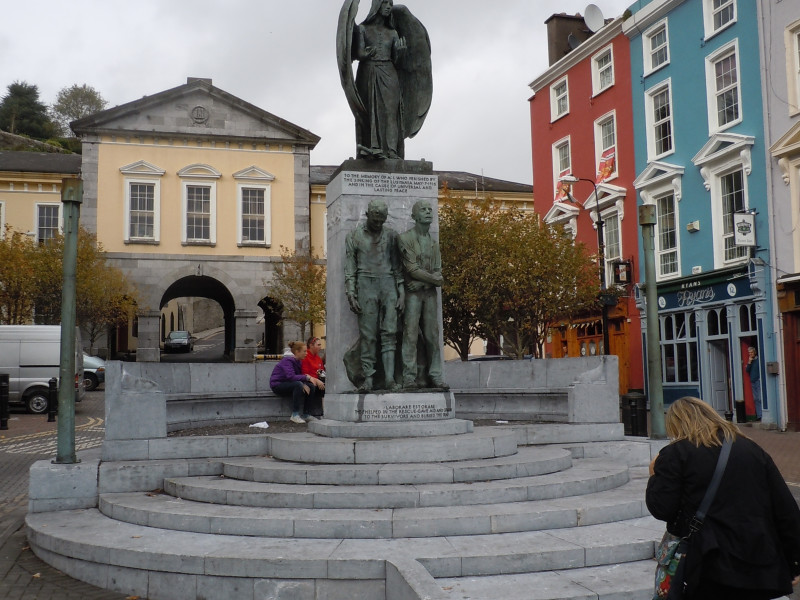







Diving German WW1 minelaying submarine UC-42.
Sidescan sonar image of Wreck of 1692 (to be confirmed) discovered by Carroll O'Donoghue, owner/operator of HARPY, in 2015.
A selection of our underwater survey hardware. We're ready when you need us.
Wreck-diving off the Old Head of Kinsale
Commercial Divers working on undersea pipes outside Kinsale harbour.
Recovering Diver after ascent from Lusitania wreck.
Sunset in Kinsale, pictured from the quays.
This is one of Lusitania's 4 propellors. She was salvaged from the wreck in 1982 and was rescued by Liverpool maritime museum in 1989, where she now remains an outside exhibit.
The 4-blade props replaced the original 3-bladed props in 1909 and gave an extra 1 knot speed. Each prop is 23 tons of bronze and rotated at 3 times a second to give 26kts. The cone however is cast steel. The props show clear signs of wear from many Atlantic crossings, but also from lying on the sea bed for so long.

Commissioned by an American committee, including President Roosevelt, to commemorate the Lusitania victims this was designed by Irish-American sculptor Jerome Connor (1876-1943).
It depicts the fishermen who had laboured to recover the living and the dead from the Lusitania. It is topped by the Angel of Peace. Construction of this memorial took 11 years.

This davit from the Lusitania snagged the nets of a Kinsale trawler and was landed at Kinsale pier. It is located at the rear of Kinsale museum. The museum has a direct connection with the wreck and WW1 and is recommended if you visit Kinsale.
This is one of Lusitania's 4 propellors. She was salvaged from the wreck in 1982 and was rescued by Liverpool maritime museum in 1989, where she now remains an outside exhibit.
The 4-blade props replaced the original 3-bladed props in 1909 and gave an extra 1 knot speed. Each prop is 23 tons of bronze and rotated at 3 times a second to give 26kts. The cone however is cast steel. The props show clear signs of wear from many Atlantic crossings, but also from lying on the sea bed for so long.
Commissioned by an American committee, including President Roosevelt, to commemorate the Lusitania victims this was designed by Irish-American sculptor Jerome Connor (1876-1943).
It depicts the fishermen who had laboured to recover the living and the dead from the Lusitania. It is topped by the Angel of Peace. Construction of this memorial took 11 years.
This davit from the Lusitania snagged the nets of a Kinsale trawler and was landed at Kinsale pier. It is located at the rear of Kinsale museum. The museum has a direct connection with the wreck and WW1 and is recommended if you visit Kinsale.
|
|
|
|